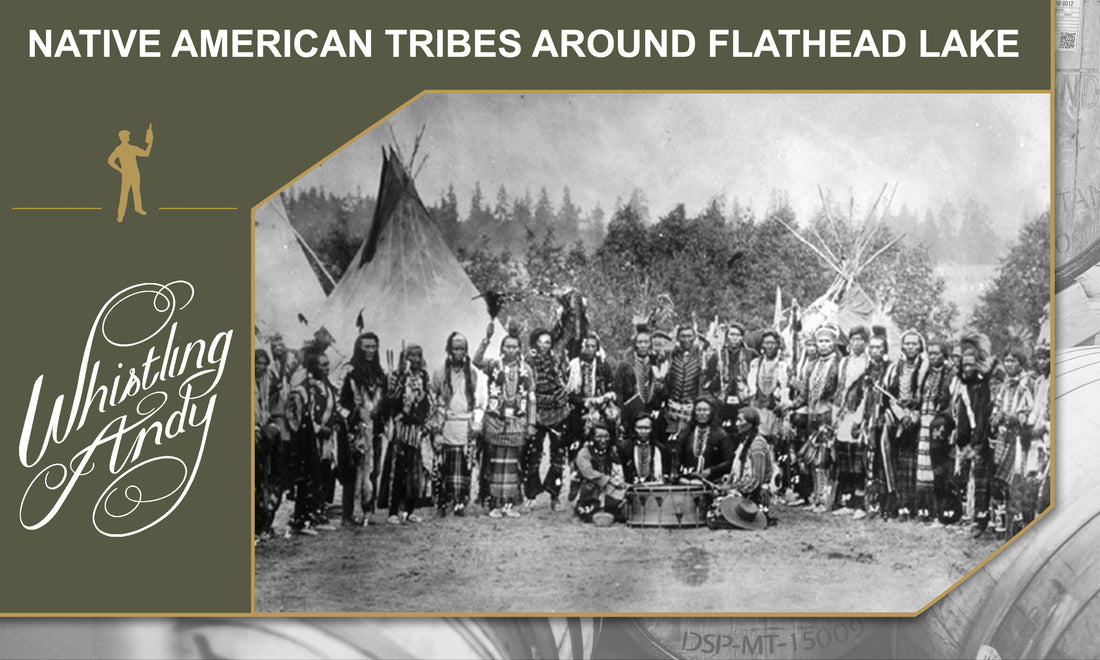Flathead Lake is the largest freshwater lake west of the Mississippi and is located amongst some of the most picturesque scenery the American West has to offer. For thousands of years, Native American tribes have inhabited the area around the lake in what we now call Montana.
Three primary tribes have made their home in this area for millennia. Today they are known as the Confederated Salish and Kootenai Tribes, which comprises the Bitterroot Salish, the Kootenai, and the Pend d'Oreilles. Many members of these tribes now reside on the Flathead Reservation, which includes most of Flathead Lake.

The United States established the Flathead Reservation in 1855 with the Treaty of Hellgate, carving out land around the southern part of Flathead Lake for the tribes. The area presently encompasses more than 1.3 million acres of diverse, beautiful landscape, including the National Bison Range. Today, out of nearly 8,000 registered tribal members, over 5,000 continue to reside on or near reservation land.
Though the traditional ways of life of these Native Americans were forever altered once European settlers began to come into the area, each tribe has a rich history that members are currently working to preserve, ensuring that their traditions will survive and flourish for generations to come.
Bitterroot Salish
The Bitterroot Salish are descended from Salish peoples who migrated from the West Coast eventually settling in the Bitterroot Valley area of Montana in the 1700s. Salish tribes are found throughout the Pacific Northwest and many dialects of the Salish language exist.
The Bitterroot Salish were dubbed “The Flathead” by the first European settlers to encounter the tribe because they were incorrectly believed to practice skull flattening on infants. However, the tribe denies that this was practiced by their ancestors. Instead, it may be that their heads appeared flat when compared to other tribes which did practice head binding.

Their traditional diet was completely rooted in the seasons and what was provided by the land. They gathered roots, berries and vegetables, and fished for much of their protein. Hunting often occurred in the fall, with men responsible for hunting, bringing in mostly deer and elk. Occasionally, they would hunt for buffalo, though this caused conflict with the Blackfeet, a powerful Plains tribe. After the men brought back their kills, the women were then tasked with drying the meats and preparing the skins for clothing and tipis they used for shelter.
During the early 1800s, Jesuit priests came to indigenous territory in order to convert the native population to Christianity. While many did convert to this new religion, it was often through forced assimilation, causing tribe members to abandon their ancestral religious, cultural, and spiritual practices.
Though the Bitterroot Salish ceded much of their tribal lands to the U.S. through the Treaty of Hellgate, the tribe did not begin to move to the reservation for almost two decades after the treaty was signed.
The Kootenai
Like most indigenous peoples, the Kootenai have traditionally passed their history down through oral tradition. It is uncertain exactly when the Kootenai arrived in present-day Montana, but archeological evidence suggests that they have been present in the area for centuries. The Kootenai language is considered an isolate, completely unrelated to the Salish languages spoken by many tribes in the area, suggesting that they migrated, perhaps from the Plains.
This traditionally nomadic tribe historically consisted of two factions. One lived in the northeast area of present-day Montana and centered their lifestyle around buffalo until their predominantly peaceful lifestyle was threatened by the warring Blackfeet. The other resided in the western mountain ranges, and their livelihood was focused on water. The Salish name for them even referred to them as the “water people.”

In many ways they were similar to the Bitterroot Salish. They primarily lived in tipis and shared a similar hunter/gatherer lifestyle, with the workload divided amongst the sexes. After Christian missionaries came to their land, they were also soon converted, losing much of their cultural identity in the process.
Unlike the neighboring tribe, the Kootenai took to the new reservation land after the Treaty of Hellgate was signed.
The Pend d'Oreilles
The Pend d'Oreilles, were given their name by French fur trappers settlers to the area. Meaning “hangs from ears”, they were distinctive for the large shells they hung from their earlobes as well as for painting their faces and wearing beads in their long hair. Also known as the Kalispel, the tribe is a Salish-speaking people who have a long history in the Flathead Lake area.
The Pend d’Oreilles and Bitterroot Salish had many traits in common. Their lodging consisted of tipis as well as shelters made from woven cattails. In addition to hunting for game, fishing, and gathering berries and roots, their diet relied heavily on camas, a flowering plants whose bulb was considered a delicacy.
The Confederated Salish and Kootenai Tribes Today
This band of tribes has managed to adapt to their “contemporary situation” while never losing sight of their authentic culture. To encourage others to learn about their rich native heritage, these tribes hold powwows that are open to the public and have cultural centers that house artifacts and artwork that highlight the beauty of their traditions and history.

Native American Tribes Around Flathead Lake: A Rich Past and Bright Future
The three Native American tribes from the Flathead Lake area of Montana have a rich history that predates recorded time.
Though similar in many ways, each of the tribes has its own culture, traditions, and past that make them unique.
The Confederated Salish and Kootenai Tribes continue to persevere and thrive, sharing their rich cultures with the world. They truly play an integral role in the Flathead Lake area and will continue to do so for generations.





